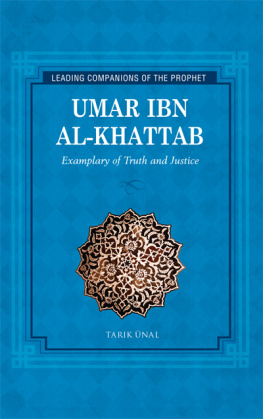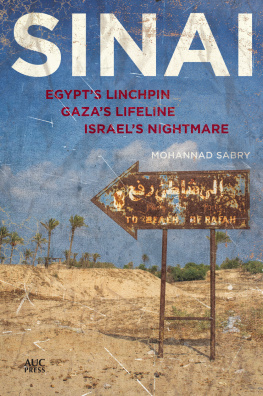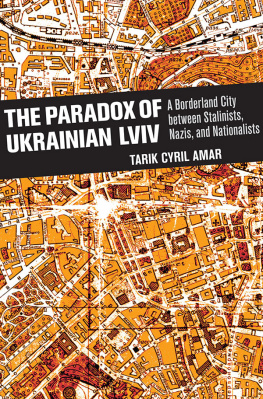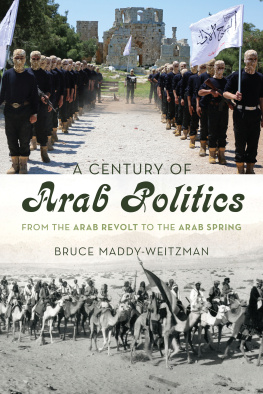Tarik Sabry is Reader in Media and Communication Theory at the University of Westminster. He is author of Cultural Encounters in the Arab World: On Media, the Modern and the Everyday (2010) and editor of Arab Cultural Studies: Mapping the Field (2012), both from I.B.Tauris. He is also co-founder and co-editor of the Middle East Journal of Culture and Communication.
Layal Ftouni is a writer, research candidate and visiting lecturer at the University of Westminster and SOAS, University of London. Her publications include Rethinking Gender Studies: Towards an Arab Feminist Epistemology in Arab Cultural Studies: Mapping the Field (2012).
I am overjoyed to see that a collection inspired by and interrogating the rubrics of Arab subcultural studies has come to fruition and have been consistently wowed by the quality of the scholarship within. It has been a long time since I have read an anthology on a similar topic this insightful and various.
Kay Dickinson, Concordia University, author of Arab Cinema Travels: Transnational Syria, Palestine, Dubai and Beyond
Arab
Subcultures
Transformations in
Theory and Practice
TARIK SABRY AND LAYAL FTOUNI
Published in 2017 by
I.B.Tauris & Co. Ltd
London New York
www.ibtauris.com
Copyright Editorial Selection and Introduction 2017 Tarik Sabry and Layal Ftouni
Copyright Individual Chapters 2017 Ramy Aly, Jamal Bahmad, Donatella Della Ratta, Tarek El-Ariss, Heba El Sayed, Rayya El Zein, Layal Ftouni, Justin McGuinness, Nisrine Mansour, Augusto Valeriani, Sami Zubaida
The right of Tarik Sabry and Layal Ftouni to be identified as the editors of this work has been asserted by the editors in accordance with the Copyright, Designs and Patents Act 1988.
All rights reserved. Except for brief quotations in a review, this book, or any part thereof, may not be reproduced, stored in or introduced into a retrieval system, or transmitted, in any form or by any means, electronic, mechanical, photocopying, recording or otherwise, without the prior written permission of the publisher.
Every attempt has been made to gain permission for the use of the images in this book. Any omissions will be rectified in future editions.
References to websites were correct at the time of writing.
Library of Modern Middle East Studies 152
HB ISBN: 978 1 78076 902 8
PB ISBN: 978 1 78076 903 5
eISBN: 978 1 78672 042 9
ePDF: 978 1 78673 042 8
A full CIP record for this book is available from the British Library
A full CIP record is available from the Library of Congress
Library of Congress Catalog Card Number: available
Contents
Tarik Sabry and Layal Ftouni
Ramy Aly
Tarek El-Ariss
Donatella Della Ratta and Augusto Valeriani
Rayya El Zein
Sami Zubaida
Heba El Sayed
Jamal Bahmad
Nisrine Mansour
Justin McGuinness
List of Figures
The smiley face on the zoning wall at the intersection of El Sheikh Rihan Street and Qasr al-Aini, downtown Cairo, December 2011
This Sea is Mine, performance by Dictaphone Group, Ain El Mreisseh fishing port, Beirut, September 2012
Map of Beiruts seafront: ownership and private exploitation
Nothing to Declare, lecture performance by Dictaphone Group, Ashkal Alwan, Beirut, September 2014
Nothing to Declare, lecture performance by Dictaphone Group, Tranzquartier, Vienna, June 2013
Map of the railway, condition of the train stations, and their current use
Acknowledgements
We would like to thank the contributors for their commitment and generosity and I.B.Tauris for literally adopting the Arab Cultural Studies Project, of which this book is part. We would also like thank the University of Westminsters Arab Media and Culture Centre for its continuous support.
Introduction
Arab Subcultures and the Paradox of Cultural Translation
Tarik Sabry and Layal Ftouni
[W]hen Adorno uses Lukcs to understand Schoenbergs place in the history of music, or when Fanon dramatised the colonial struggle in the language of the manifestly European subjectobject dialectic, we think of them not simply as coming after Lukcs, using him at a belated second degree, so to speak, but rather as pulling him from one sphere or region into another. This movement suggests the possibility of actively different locales, sites, situations for theory, without facile universalism or over-general totalizing [] To speak here of borrowing and adaptation is not adequate [] [T]he exercise involved in figuring out where the theory went and how in getting there its fiery core was reignited is invigorating and is also another voyage, one that is central to intellectual life in the late twentieth century.
Edward Said
Theory is no longer naturally at home in the West a powerful place of Knowledge, History, or Science, a place to collect, sift, translate and generalise. Or, more cautiously, this privileged place is now increasingly contested, cut across, by other
James Clifford
Putting together a book on Arab subcultures, an area of study scarcely researched, has been a challenging but also a productive process. The persistent question that bore attention since the earliest stages of this project was: Why Arab subcultures? The desire to grapple with the sense of urgency attached to this project, without falling into a presentist appraisal of subcultural practices, introduces another set of challenges. How do we historicise and write about a cultural phenomenon that permeates the cultural fabric in the region through the lingua franca of Cultural Studies? What is Arab and subcultural about Arab subcultures? Can we uncouple the term subculture from the specificity of its etymological roots and its appropriations in research in the UK and the US, or is subculture a universal category that discloses itself in similar ways, regardless of the differences in historical moments or cultural geographies?
Studies on subcultures in the West, represented by two distinct schools the Chicago School and the Centre for Contemporary Cultural Studies (CCCS) at the University of Birmingham provided a rich repertoire of scholarly material and research. A paradigmatic shift can be traced from earlier studies in the US in the 1940s and 1950s, when the dominant readings were focused on the sociological as a determinant factor in the study of youth culture, to the cultural (predominantly Marxist) class-based and ethnographic approaches in the 1970s. From there, the emphasis moved to semiotic readings of subcultures in the late 1970s and 1980s, then on to a post-modern, post-Weberian identification of post-subcultures, where society is replaced by the individual, and where distinctions between subculture and dominant culture became problematic as post-modernism began to fragment dominant cultures into a plurality of life style sensibilities and preferences.without a process of translation? What would it mean, since we live in a world of mediated spaces and times of the other, to think in terms of a trans-subcultural theory that, in the meantime, avoids the pitfalls and intellectual impasse that result from essentialist and exceptionalist discourses?








![Tarik Soulami - Inside Windows debugging: [practical debugging and tracing strategies]](/uploads/posts/book/240776/thumbs/tarik-soulami-inside-windows-debugging.jpg)
